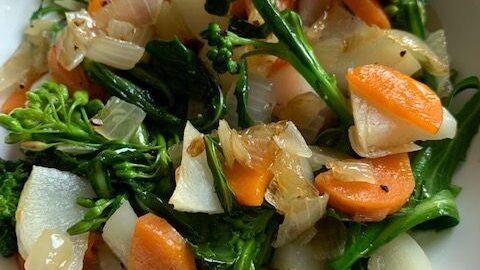Please explain why you came to our office.
“I started bringing my daughter to see Dr. Burgoon because she had lower back pain and her gait was off. She was unable to take stairs by alternating her feet.”
Please describe your response to treatment.
“Since being treated a few months by Dr. Burgoon, she no longer complains of back pain, her posture and gait have improved. She is now able to go up and down stairs by alternating her feet.”
10 year-old female



 Daikon radish, though often overlooked, is a nice mild-tasting root vegetable addition to vegetable sautees. It belongs to the cruciferous family of vegetables which is known for many health benefits when included as part of a diet.
Daikon radish, though often overlooked, is a nice mild-tasting root vegetable addition to vegetable sautees. It belongs to the cruciferous family of vegetables which is known for many health benefits when included as part of a diet.